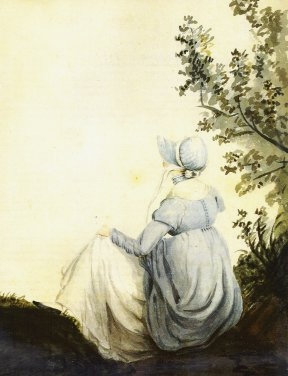She contends that the young Jane very likely had the opportunity to read Mary's works. In the chapter "Vindication" of her 2005 Vindication, she points out that The Female Reader, an anthology which Mary compiled for Johnson, was published when Jane was 14, "reading at home, and the perfect recipient for this book". There are plenty of Austen parallels, examples in each of the six canonical novels, and the juvenalia as well, that show the folly of the miseducation of daughters and of unequal marriages. Her novella ''Catherine'' appeared within a year of Rights of Woman. "Wollstonecraft's ridicule of women's inflated gush and plaything eduction reappears in Austen's ridicule of Camilla" and her useless, ladylike accomplishments. "Wollstonecraft's voice sounds once more when Elizabeth Bennett will not grovel to imperious Lady Catherine de Burgh in Pride and Prejudice", in contrast to the vacuous Bingley sisters, who focus all their attention on marriage and men. The biographer links the two women backwards as well, crediting Mary with an "infallible Austen eye for the tendency of able men to mate with inferiors". See also her essay on Persuasion: "Jane Austen is often co-opted for conservatism, but her novels question traditional authority and female artifice."
Here's a passing reference to the impact of Mary Wollstonecraft, and how she has become embedded in how we now read Austen, even had the author not intended it. Olwen Hufton's two-volume overview of women's history in Western Europe, The Prospect Before Her: 1500-1800, mentions Fanny Price "in her clear-sighted notions of the appropriate, and her eschewing of the trivial, [as] something of a spiritual legatee of The Vindication."
Coming up next: an outsider reads the canon. We meet Arnie Perlstein, and you won't forget him.
Jane Austen, by her sister Cassandra. (1773-1845) [Public domain], via Wikimedia Commons
-----------------------------
Part of a linked series:
Jane Austen: a lost daughter? Part one,
Part two: Kirkham and Ascarelli,
Part three: Gordon,
Part four: Perlstein,
Part five: Gilbert,
Part six: Russo and Broemel.
Part of a very loose series on lost daughters and sons: Margaret King (Mrs Mason) , Millicent Garrett Fawcett, C19 American women's rights advocates, Claire Clairmont, Voltairine de Cleyre, William Gladstone, Ayaan Hirsi Ali, Amartya Sen
Part of a very loose series on lost daughters and sons: Margaret King (Mrs Mason) , Millicent Garrett Fawcett, C19 American women's rights advocates, Claire Clairmont, Voltairine de Cleyre, William Gladstone, Ayaan Hirsi Ali, Amartya Sen

No comments:
Post a Comment